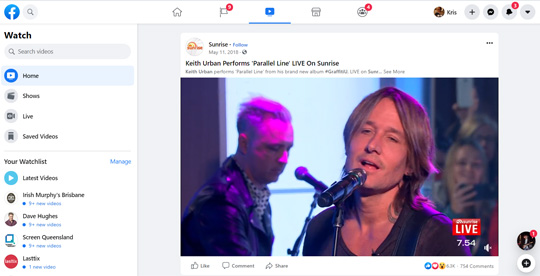
You have decided to build your own digital marketing strategy. What's next? The article will take you through every step, from choosing your channel to research your audience. This article will also show you how to create a customer journey and split test your strategy. Then, you'll know if your new strategy is working for your brand. If it doesn't work, don't worry. There are many other businesses asking the same questions: "How do you start a digital advertising strategy?"
Researching your audience
To create a digital marketing strategy, you need to research your audience. This can be done through quantitative research. This involves surveying large populations and producing statistical results. For example, if you want to create an email campaign for a specific audience, you need to identify their interests and pain points. You can also review their purchase history to determine if they have changed their purchasing habits. You can then target your marketing message to specific audience segments.
To create a successful digital marketing strategy, you need to understand your audience well. Without research, you'll be blind to their desires and needs. You can identify their needs and provide personalized content by conducting research. It's possible to identify their needs and make your marketing more effective by conducting research. Here are some suggestions for researching your audience.
Interviews: You can use surveys to better understand your audience. Emailing existing customers is a great way to get feedback from them and conducting interviews. These surveys will help you understand your audience. This information will help you to create your digital marketing strategy. Researching your audience is crucial, but it's also essential to create a compelling campaign. This way, you'll be able to engage your audience and increase sales.
Segmentation - By understanding your audience's lifestyle, interests and preferences, you can tailor the messaging to them. Segmentation can help you communicate with your audience in a stronger way and build a relationship with them. Adidas sent a specific email targeting women, while the clothing manufacturer categorised its customers by gender. The vast majority of customers buy jeans and a survey asking them to rate the retailer would yield an average score of 8/10.
Choosing channels
It is essential to choose the right digital marketing channels for your product or services promotion. The primary goals, competition, budget, and other factors should guide your choice. Different channels can produce different results so make sure you choose the right channel for you. Depending on the channel you choose, what content you share with your audience will determine which format you use for your ads. Content marketing is still the best form of marketing. It will always be relevant. However, if your goal is to reach your audience, this technology must be used.

The decision to use a particular digital marketing channel will depend on the goals of your business. You should determine your long-term as well as short-term goals. One long-term goal is to increase revenue 20 percent over the next two year. Another short-term goal is to generate 400 qualified leads in six months and increase website traffic by 70% within eight months. So that you can decide which channels will work best, it is important to clearly identify your short-term (and long-term) goals.
Make sure you analyze each channel's effectiveness before you decide which channels are best. Each channel comes with its own strengths, weaknesses and freedoms. Determine the types of content that you will need for each channel and its costs. Before you use new channels in your digital marketing strategy, make sure that you have enough budget. If you want to create a buzz-generating campaign, you should use Facebook or Twitter.
Creating a customer journey
A customer journey plan is one of the key elements to a successful digital marketing campaign. These maps depict the journey a customer takes to get from decision making to taking action. The customer journey map serves many purposes. For example, it can show the customer's journey from the initial stage of the sales funnel up to the moment when they become lifelong customers. The customer journey maps can also be helpful in identifying areas that can be improved.
In simple terms, a customer's journey map shows how a prospect will get to the point of purchase. It is used by marketers to help them map the questions they ask as well as the pain points they encounter. The higher-funnel stage is aimed at increasing awareness and interest. While the last stage is aimed to foster brand loyalty, The first step in this process is to create awareness. This can be achieved through word of mouth, social media, search engine suggestions and blogs.
After researching and learning about a brand, potential customers begin the information-gathering phase of the customer journey. They may not be familiar with you at first, but they have an idea of what they want. This phase of the Customer Journey should include content that assists customers in making informed decisions. Additionally, customers can get a free trial period from brands to overcome any last hurdles during their buying journey.
Marketers can use a customer journey map to help them target advertising by understanding how customers buy products and services. Each stage of the customer journey should have its own buyer persona. Marketers can adjust their marketing campaigns by identifying each stage's goals. Marketers can also create a customer journeymap to better understand the customers they are targeting by mapping out what motivates them at each stage of their decision-making process.
Split testing your strategy
Split testing can increase your business' profitability. It can be used in multiple areas of your digital marketing strategy. These areas include page copy, headlines, buttons text, images and social sharing buttons. Email marketing is also a good option. Below are some scenarios that you could test. Split testing allows you to identify which marketing tactics are most effective in increasing sales and profitability. It is important to select the correct sample size. Split testing should be done regularly and should be conducted with an appropriate confidence rating.
Split testing helps you identify which marketing strategies are performing well and where you need to make improvements to maximize their effectiveness. Split testing allows you to track whether your online marketing strategies are generating leads or bringing in returns. Split testing lets you test out different versions of a website or specific elements. Using the results of the split tests, you can determine if your website is making money or not. You can then make adjustments to your digital marketing strategy once you know which variants are generating more leads.

ClickFunnels offers a library that allows you 6 different versions to test one advertisement. It can help you get ideas for split testing. Another good place to get ideas for split tests is on Facebook. Facebook provides many examples and you can easily copy these ads to see which ones are doing well. Split tests can also be tested on landing pages. Split testing is also possible on landing pages. For example, moving the CTA lower than the fold increases conversions by 30%, while taking it out of the landing page causes cart abandonment rates decrease by 33%.
Split testing is an integral part of conversion optimization. It involves dividing traffic into two groups - the control group and the variant. For split testing, you split traffic so that 50% see the control variation and the other half see the variant version. Multivariate tests allow you to divide traffic into equal segments, and then show one variant to each segment. Split testing can improve your digital marketing strategy, and you'll be amazed at the results!
Measuring success
The first step to establishing a digital marketing strategy that works is measuring its success. This can be done in a variety of ways. For example, you can track the number of buyers who converted to visitors. Other metrics can be used to measure the effectiveness of a campaign, such as the number of pages viewed. These metrics can be used for determining the success of a campaign based upon its target audience as well as the effectiveness a specific marketing strategy.
Measuring the success of a digital marketing strategy requires tracking certain key performance indicators (KPIs) in order to evaluate the success of your campaigns. KPIs can be quantifiable metrics that measure how your marketing team does against a particular goal. These goals can be either high or low level. These KPIs are helpful in identifying campaign success.
It is essential to establish clear goals for measuring your digital advertising strategy. Consider, for example, how many visits did your website get? Is your website inviting purchase? Are your email communications generating more sales than before? Are you getting new business? What percentage of visitors purchased after they read an email? These are just two examples of what you must track to ensure your digital marketing strategy succeeds. It all comes down to your objectives, your goals, as well as the digital marketing strategy.
FAQ
Where can I find my keywords
The first thing you should do is think about what products or services are available and who your ideal customers are. Then, start to search for standard terms that relate to those items. Once you have your list, you can use Google Keyword Planner and other search engines, such as Yahoo! or DuckDuckGo to determine what phrases people are looking for.
Is it Worth Paying for Backlink Services?
Backlinks are paid advertising tools that allow companies and individuals to buy links to their sites. These links are provided by other websites, who wish to send their visitors to your site. They can be purchased using either cash or a credit card.
How Often Should My Site Be Updated?
Regular updates can help improve your website's rankings. You don't always need to update your site. If you've already created good content, you may not need to update it frequently.
What is an SEO marketing campaign?
Content is an essential component of any website. Your site won't rank well enough in search results if it doesn't contain relevant and useful information.
SEO campaigns are designed to optimize your site by obtaining backlinks from other websites. It also includes social marketing optimization. This refers to using Twitter, Facebook or LinkedIn to drive traffic to your site and increase brand recognition.
These links will bring more people to your site and increase your ranking. SEO campaigns focus on building quality backlinks to your site in order for Google to recognize your website's value.
How often does SEO need be done?
You don't necessarily have to carry out SEO campaigns every day if you manage your links correctly. But, if you neglect to maintain your links and rely solely upon organic traffic, you might lose out on potential clients.
Small businesses are advised to have their SEO updated monthly. A quarterly update may be necessary for larger companies.
Why Should I Use SEO
There are several reasons why you should use SEO.
First, it increases traffic to your website by ensuring your website is high up in search engine results.
It also helps users to find what they are looking for by increasing conversions.
It helps customers find you online, which increases brand awareness.
It also improves the user experience by allowing users to navigate quickly through your website.
It creates trust and credibility among potential customers.
Should I Hire an Agency Or Do it On My Own?
An agency is a great way to get started. First, agencies usually offer packages that include everything you need to start. They often offer training to help you understand what you should do once you have hired them. They can also handle any tasks required to rank your site higher.
Statistics
- If two people in 10 clicks go to your site as a result, that is a 20% CTR. (semrush.com)
- 64% of marketers actively create SEO campaigns because they help hit multiple key performance indicators (KPIs), including increasing traffic, helping your site rank for relevant keywords, improving your conversion rate, and much more. (semrush.com)
- Which led to a 70.43% boost in search engine traffic compared to the old version of the post: (backlinko.com)
- Sean isn't alone… Blogger James Pearson recently axed hundreds of blog posts from his site… and his organic traffic increased by 30%: (backlinko.com)
- A 62.60% organic traffic boost to that page: (backlinko.com)
External Links
How To
How can I tell if I'm doing SEO well?
There are many ways you can tell if your SEO efforts are successful.
-
Your bounce rate should be less than 30% - users leave your page without clicking on anything else. High bounce rates indicate that your audience isn’t confident in your brand or doesn’t care about what you sell.
-
People visit multiple pages on your site - this shows that visitors are engaging with your site and finding something useful.
-
Your conversion rates are improving. Your audience is aware of your product and wants it to be bought.
-
Your average time on site is increasing - people spend longer viewing your content.
-
More people are coming from searches - this is one of the most reliable signs that you're doing great SEO.
-
This means that you are getting more social media shares - it shows that others are sharing your content and reaching new audiences beyond your own followers.
-
You get more comments on forums, which shows that people are responding positively to your work.
-
You get more engagement on your website, with more likes, tweets and shares.
-
Your rank is rising in SERPs, which shows that your hardwork is paying off.
-
Your website is generating more leads - this means that people are finding your site organically and contacting you.
-
Your sales are growing - this shows that people who came to your website searching for your products and services are buying them.
-
Your blog post is more popular and gets more comments, which shows that people find the content valuable.
-
You get more subscribers to your email list - this shows that people trust you enough to subscribe to receive updates about your business.
-
Sales are on the rise - This means people love your products enough to be willing to spend more.
-
You've got more followers on social networks, showing that your fans share your content and engage with your brand.
-
You are getting more PR mentions. This shows that journalists are talking online about your brand. This raises awareness of your company and helps to improve your reputation.
-
This means that your brand is being recommended more often.
-
You will see people returning to your website over and over again. This shows that your customers are happy with the work you do, and they will return for more.
-
Your competitors are losing market share - this means they didn’t invest as much in their SEO campaigns.
-
Your brand's image is changing - this shows that your brand is becoming popular among a new group of customers.